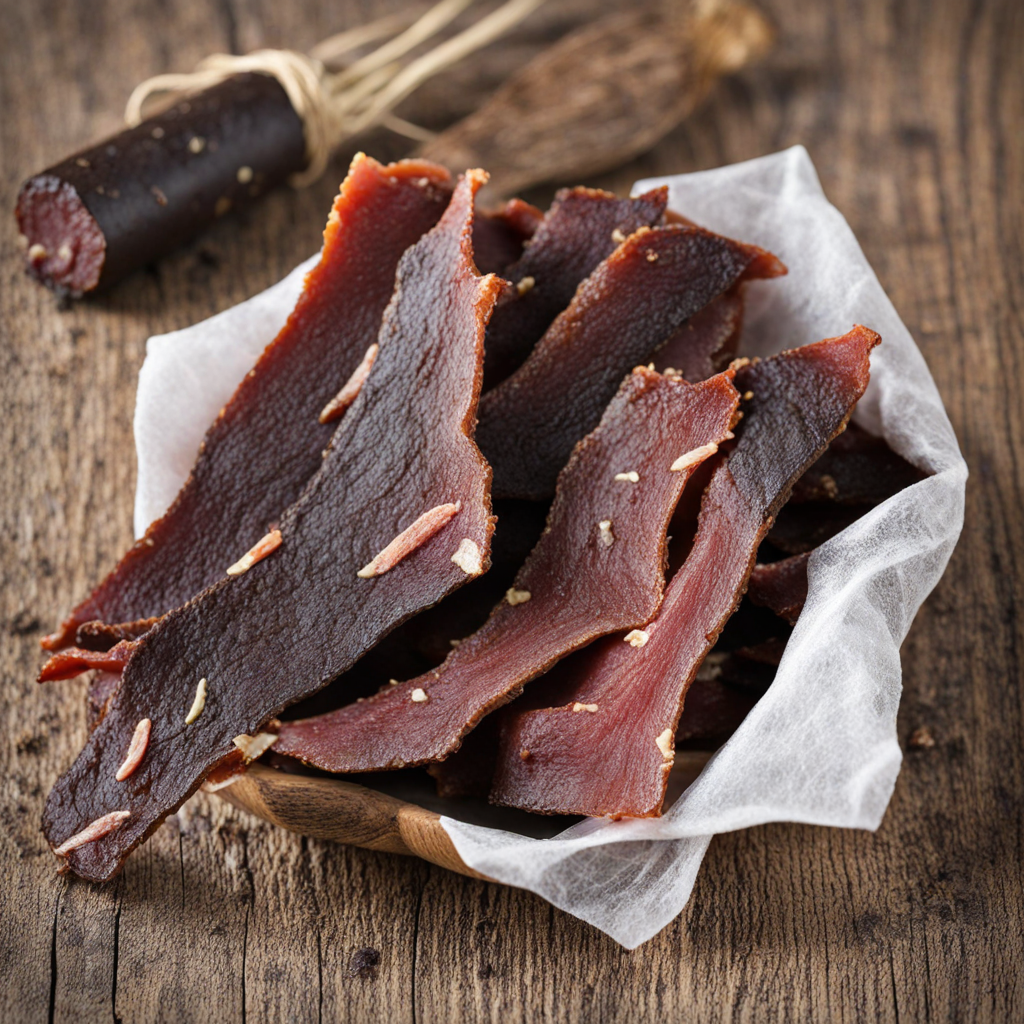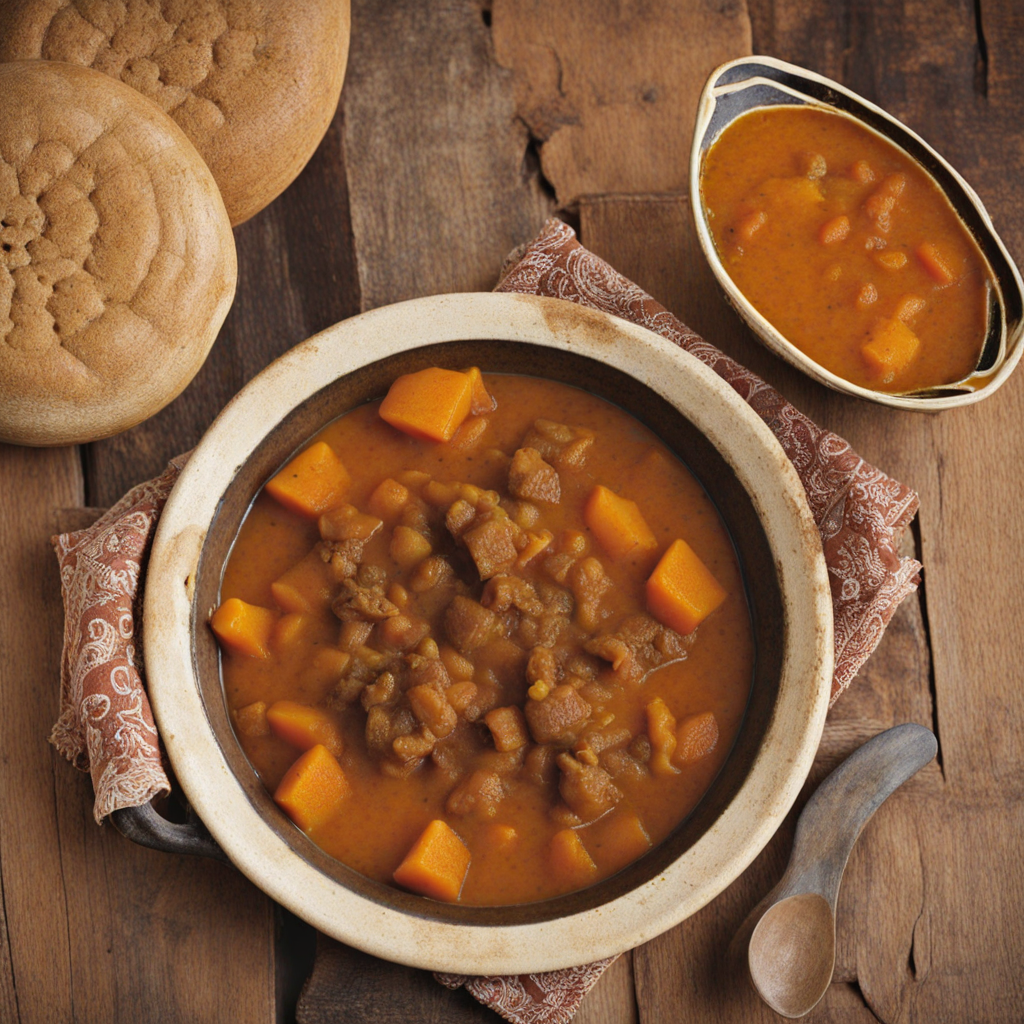Likhobe
Likhobe is a traditional dish from Lesotho that offers a unique and hearty taste experience. This flavorful meal is primarily made from maize meal, which is cooked to a thick, porridge-like consistency. The texture is smooth and creamy, providing a comforting base that is often paired with various ingredients. The dish is typically enriched with ingredients such as beans, vegetables, or even meat, allowing for a delightful combination of flavors that reflect the rich agricultural heritage of the region. The preparation of Likhobe often involves slow-cooking the maize meal to achieve its characteristic consistency, and it can be seasoned with spices or herbs that enhance its flavor profile. The simplicity of the dish allows the natural flavors of the ingredients to shine through, making it a wholesome meal that embodies the essence of Basotho cuisine. Depending on the region and personal preferences, variations may include the addition of local ingredients like pumpkin, spinach, or butternut squash, which contribute both color and nutrition. Likhobe is not just a dish; it's a cultural emblem that represents the communal dining traditions of the Basotho people. Often enjoyed during family gatherings or celebrations, it fosters a sense of togetherness. The act of sharing Likhobe is symbolic, as it encourages conversation and bonding over a hearty meal. For those seeking to explore new culinary landscapes, Likhobe offers a rich tapestry of flavors and textures that are sure to delight the palate and provide insight into the vibrant culture of Lesotho.
How It Became This Dish
Origin of Likhobe Likhobe, a traditional dish from Lesotho, has deep-rooted connections to the agricultural practices and cultural traditions of the Basotho people. Its origins can be traced back to the rich history of farming in the region, where maize and other grains have been staple crops for centuries. Likhobe is made primarily from maize, which is ground into a coarse meal and then mixed with water to form a thick porridge. This process of using maize reflects the adaptation of the Basotho to their environment, as maize became a significant crop introduced during the colonial period by European settlers. The name "likhobe" itself is derived from the Sesotho language, which is the primary language spoken in Lesotho. The dish is often prepared during communal gatherings and celebrations, signifying its importance in the daily lives of the Basotho people. Likhobe is not merely a meal; it is a symbol of sustenance and community, often shared amongst families and friends during significant events. Cultural Significance of Likhobe In Lesotho, food holds a vital place in cultural identity, and likhobe is no exception. It is often served with various accompaniments, including vegetables, meat, or traditional sauces, making it a versatile dish that can be adapted for different occasions. The preparation of likhobe is an integral part of traditional Basotho ceremonies, such as weddings, funerals, and harvest festivals. During these events, the dish signifies unity and the sharing of resources, reflecting the communal nature of Basotho society. Moreover, likhobe is associated with the Basotho concept of "mohlolo," which means blessings or gifts from ancestors. The act of sharing food is seen as a way of honoring those who came before and fostering connections among the living. As such, likhobe transcends mere nourishment; it becomes a medium through which cultural values and traditions are passed down through generations. Development Over Time As Lesotho evolved through colonial times and into the modern era, so too did the preparation and consumption of likhobe. In the past, the dish was primarily made using traditional methods, including grinding maize with a pestle and mortar and cooking it over an open fire. This labor-intensive process was a communal activity, often involving family members working together to produce enough food for gatherings. With the advent of modern technology and changes in lifestyle, the preparation of likhobe has become more convenient. The introduction of electric grinders and gas stoves has simplified the cooking process, allowing for quicker preparation times. However, despite these modern innovations, many Basotho people still hold onto traditional methods, especially during significant cultural events, as a way to preserve their heritage. The globalization of food has also influenced the way likhobe is consumed. While it remains a staple in many households, its presence has expanded beyond the borders of Lesotho. Diaspora communities have taken likhobe with them, introducing the dish to new cultures and palates. This exchange of culinary practices highlights the adaptability of traditional foods and their ability to resonate with people from diverse backgrounds. Modern Interpretation and Global Recognition In recent years, there has been a growing interest in African cuisine, and likhobe has started to gain recognition on international platforms. Chefs and food enthusiasts are increasingly exploring traditional African dishes, and likhobe has found its way into gourmet menus and food festivals. This newfound appreciation has helped elevate the dish from a local specialty to a symbol of African culinary heritage. Moreover, the growing trend of "farm-to-table" dining has led to a resurgence in the appreciation of local ingredients and traditional cooking methods. Likhobe fits perfectly into this narrative, as it is made from locally sourced maize and represents a connection to the land. By incorporating likhobe into modern dining experiences, chefs not only celebrate Basotho culture but also promote sustainable agricultural practices. Challenges and Preservation Efforts Despite its cultural significance, likhobe faces challenges in the modern culinary landscape. As urbanization increases and lifestyles change, traditional food practices are at risk of being forgotten. Younger generations may gravitate towards fast food and convenience meals, leading to a decline in the knowledge and skills required to prepare traditional dishes like likhobe. To combat this trend, various organizations and cultural groups in Lesotho are working to preserve traditional culinary practices. Initiatives aimed at educating young people about the importance of their culinary heritage have emerged, emphasizing the role of food in cultural identity. Workshops, cooking classes, and community events are being organized to teach the art of preparing likhobe and other traditional dishes, ensuring that these practices are kept alive for future generations. Conclusion: Likhobe as a Culinary Heritage Ultimately, likhobe stands as more than just a dish; it embodies the spirit of the Basotho people and their connection to their history, culture, and land. As the world becomes increasingly globalized, the preservation of traditional foods like likhobe becomes essential in maintaining cultural diversity. The journey of likhobe from its humble origins to its modern-day interpretations speaks to the resilience of culinary traditions and the importance of food as a means of cultural expression. Through the lens of likhobe, we can appreciate the rich tapestry of Lesotho's culinary heritage and recognize the significance of preserving these traditions in an ever-changing world. As communities continue to celebrate and share likhobe, it serves as a reminder of the power of food to unite people, honor ancestors, and foster a sense of belonging.
You may like
Discover local flavors from Lesotho







